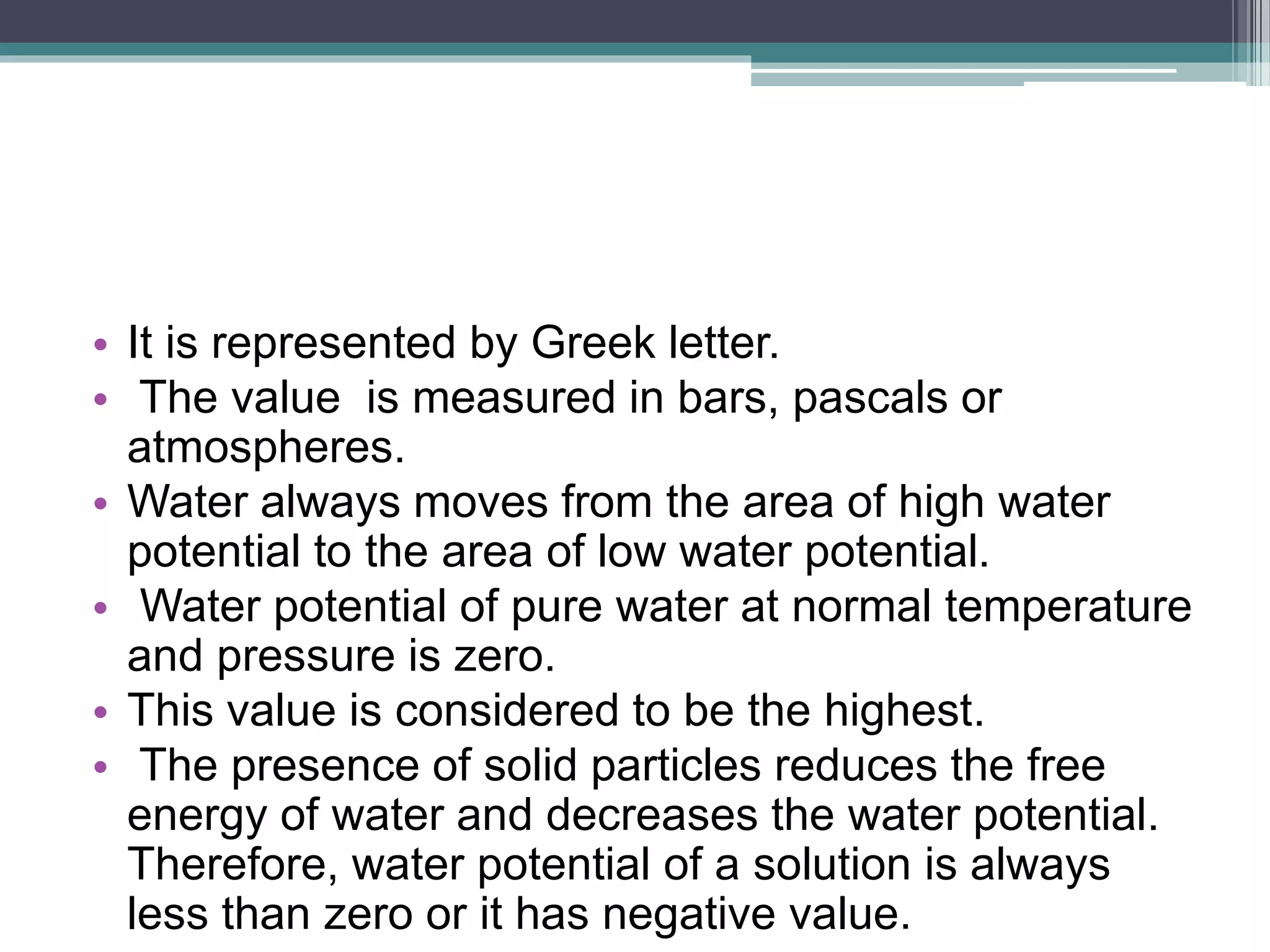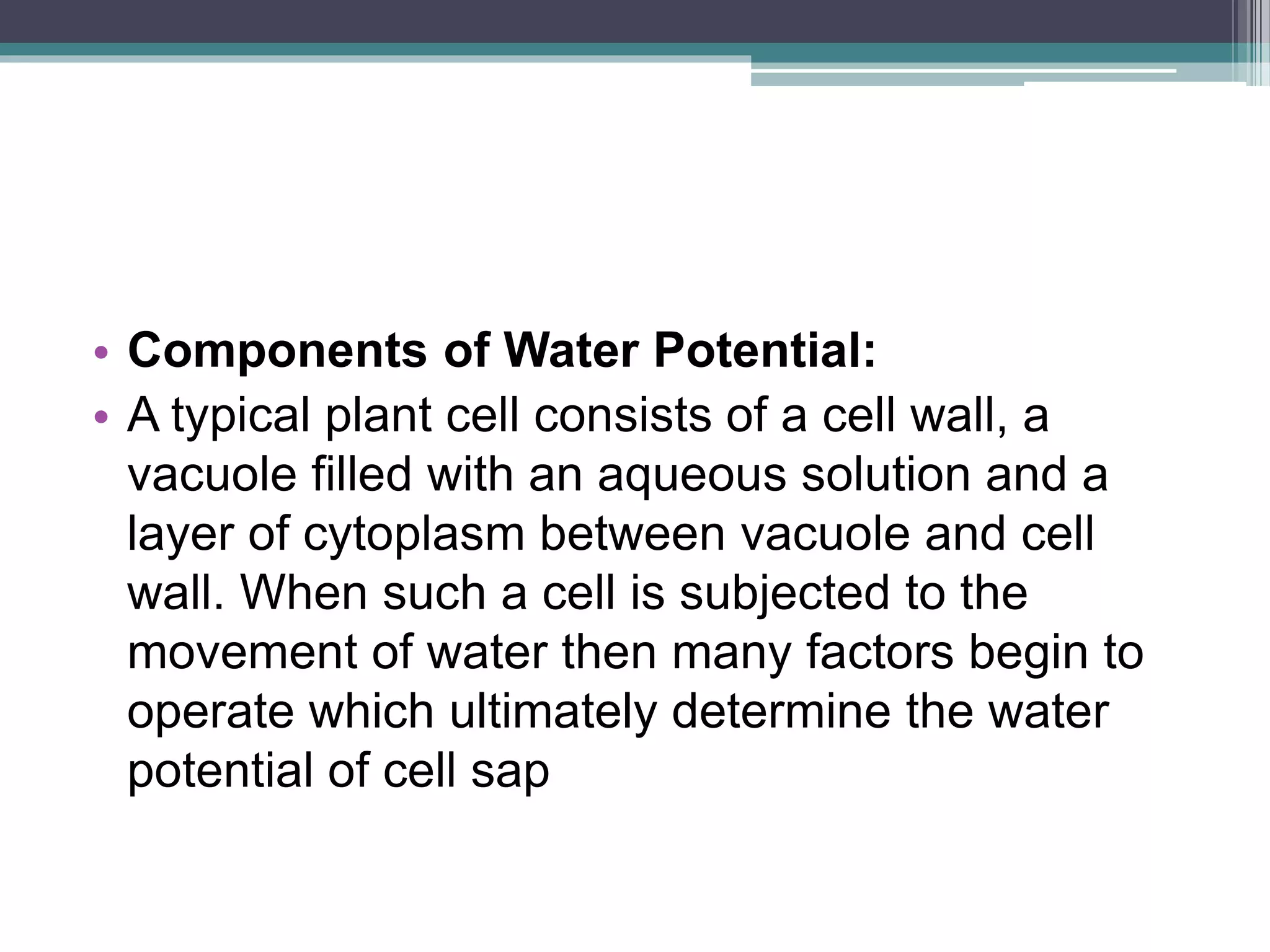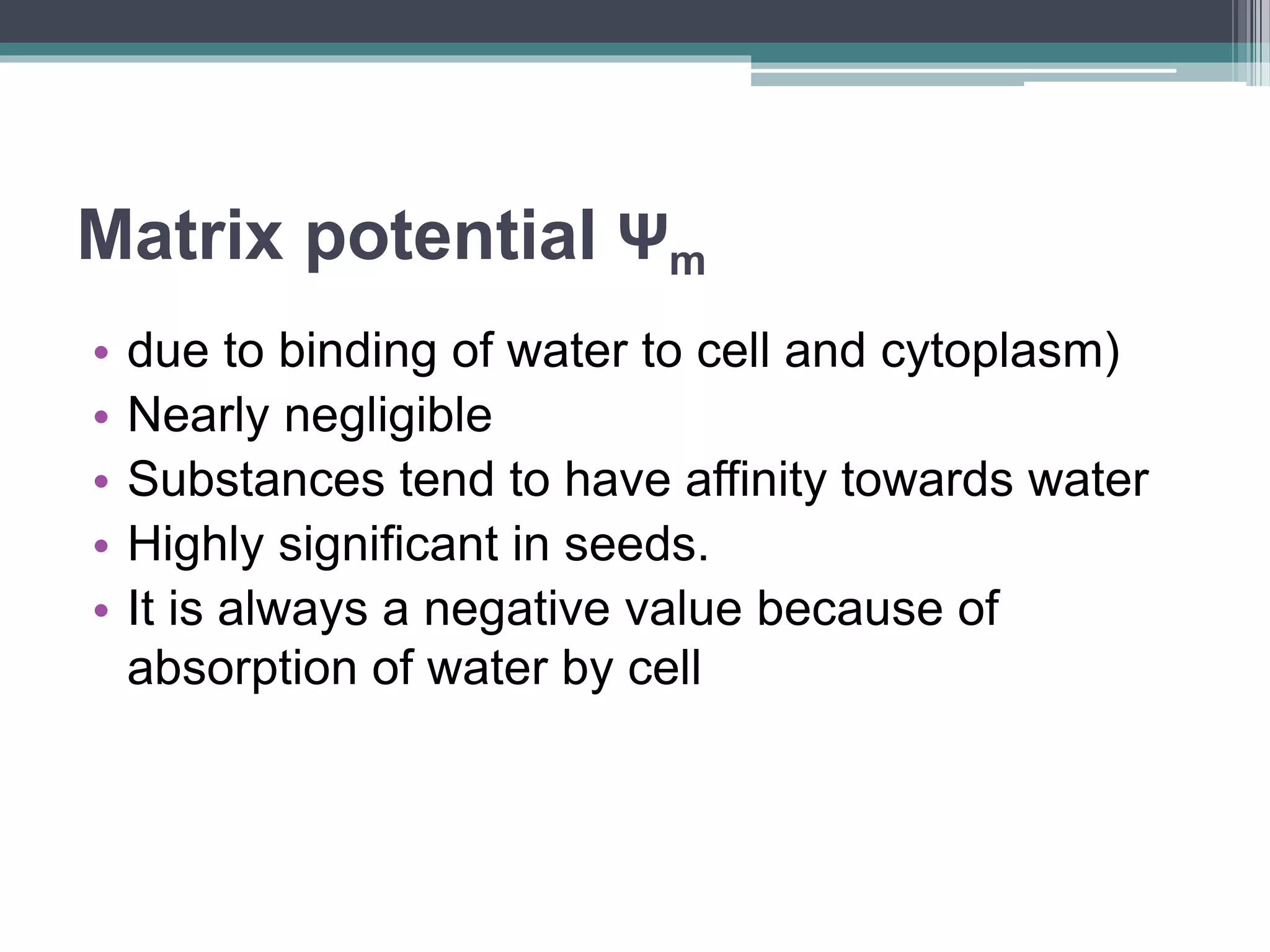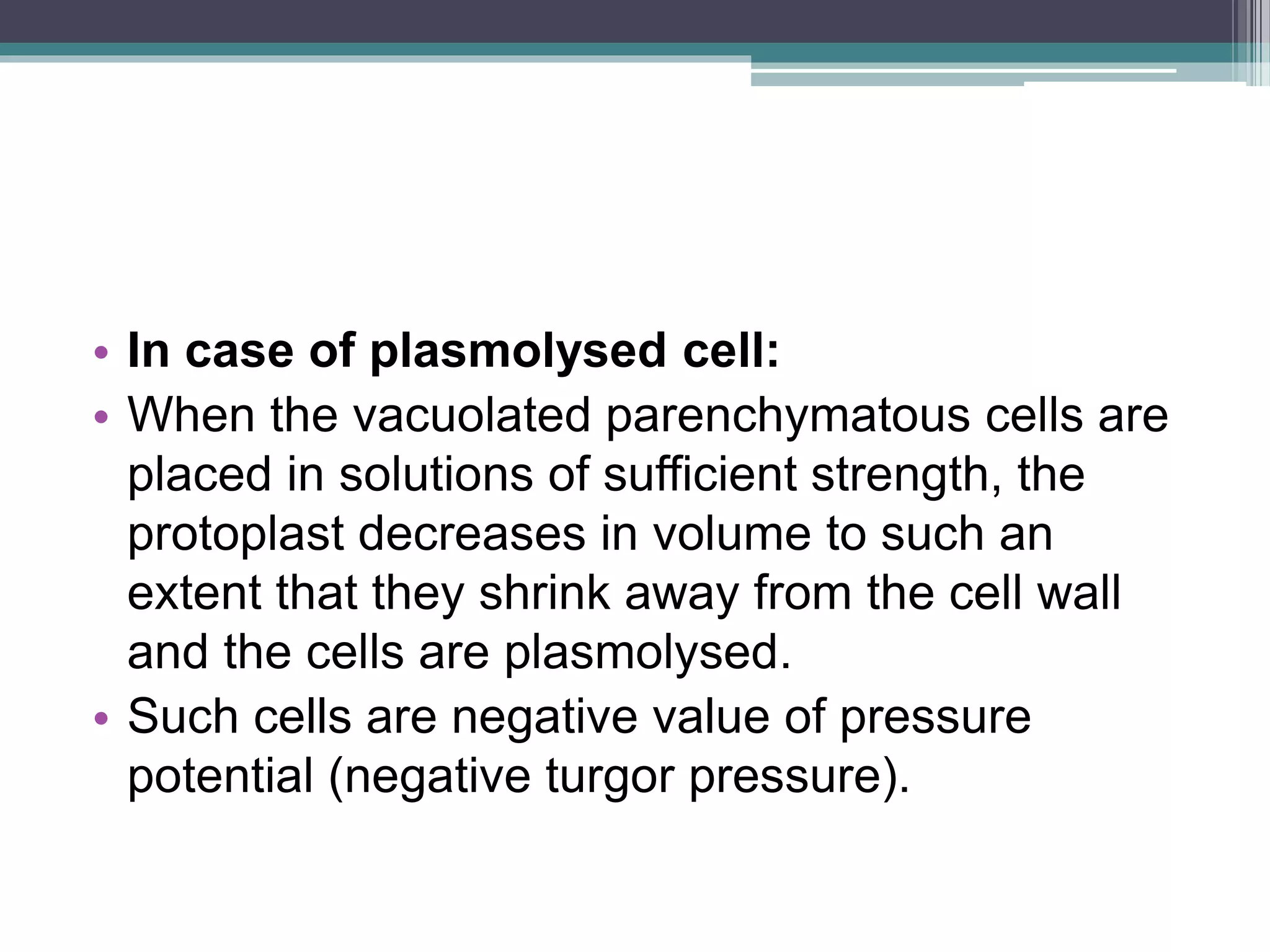Water potential is the difference in free energy between water in a plant cell and pure water. It is determined by solute potential, pressure potential, matrix potential, and gravitational potential. Solute potential decreases water potential due to dissolved solutes, while pressure potential increases it due to turgor pressure. Water always moves from areas of high water potential to low. In plant cells, matrix and gravitational potentials are usually negligible, so water potential equals solute plus pressure potentials.
















